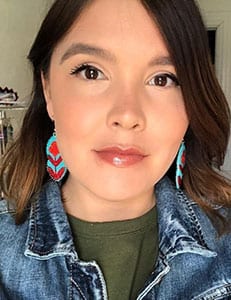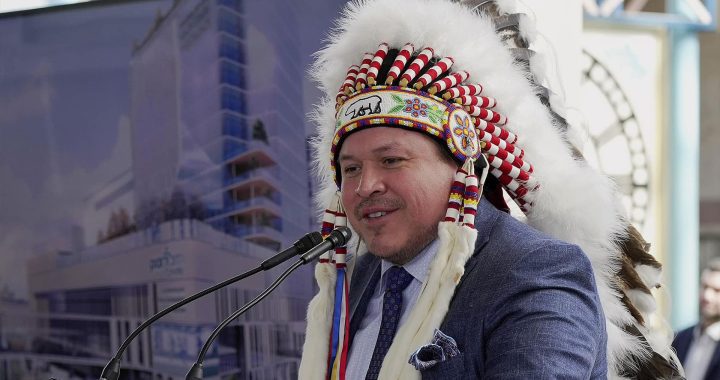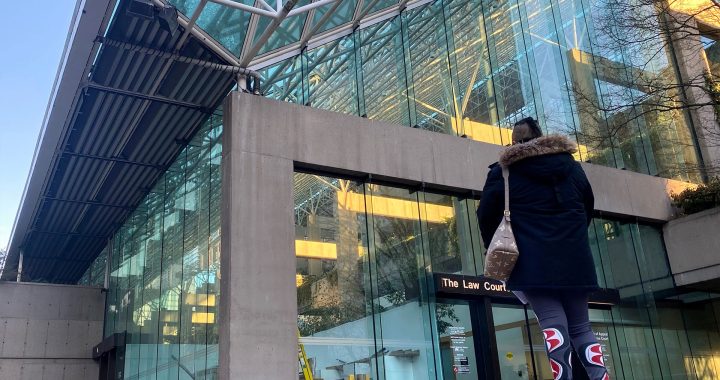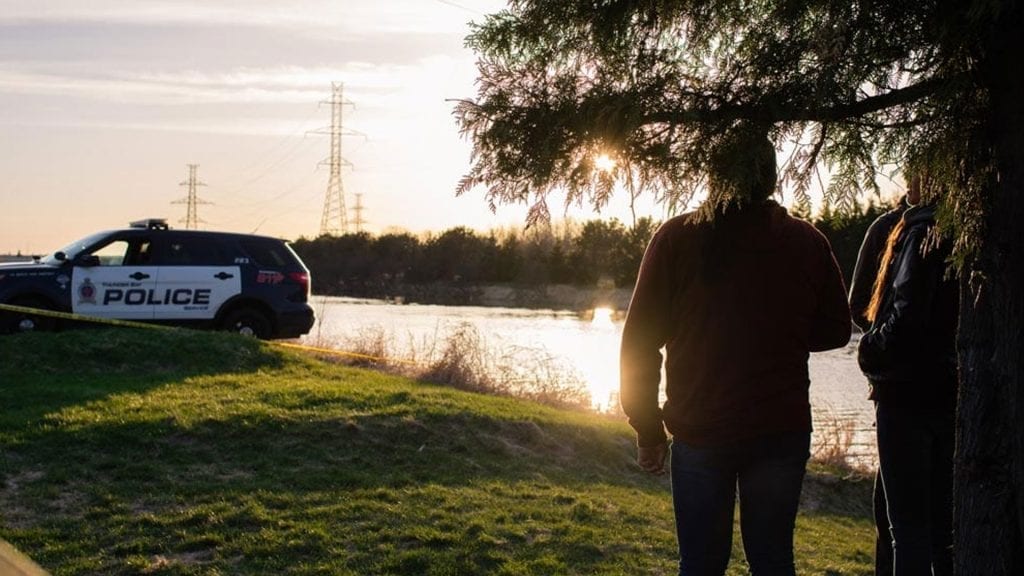
The City of Thunder Bay has released a highly anticipated strategy to address rampant racism there in late November.
Two-years in the making, the Indigenous Relations and Inclusion Strategy is a response to the Anti-Racism and Inclusion Accord signed in 2018.
The strategy is an internal anti-racism accord with a coalition of CEO’s from the ten largest employers in the city and city staff in conjunction with the Urban Advisory Committee which is made up of the Métis Nation, Fort William First Nation and Red Sky Metis Independent Nation.
The unprecedented approach to improve relationships between the city and Indigenous Peoples was spearheaded by Indigenous Relations Manager Regina Mandamin of Wiikwemkoong First Nation, with input from an elder’s council.
A bulk of the strategy was created amidst the COVID-19 pandemic and Mandamin said developing it was an “emotional roller coaster”.
“I took the time to do it right. We can’t just rush in and be reactive. We’ve had to build the strategy from the ground up to really set the road map,” she said.
The city is committing to an internal audit on its current state; engaging the public on implementation, a systemic review of city policy; implementing an anti-racism accord working group; building work processes with Indigenous partners; reporting on and reviewing the strategy and developing strategic actions; promoting workplace diversity and inclusive employee supports.
Thunder Bay has been labelled by media outlets as Canada’s most racist city where violence against Indigenous Peoples is prevalent.
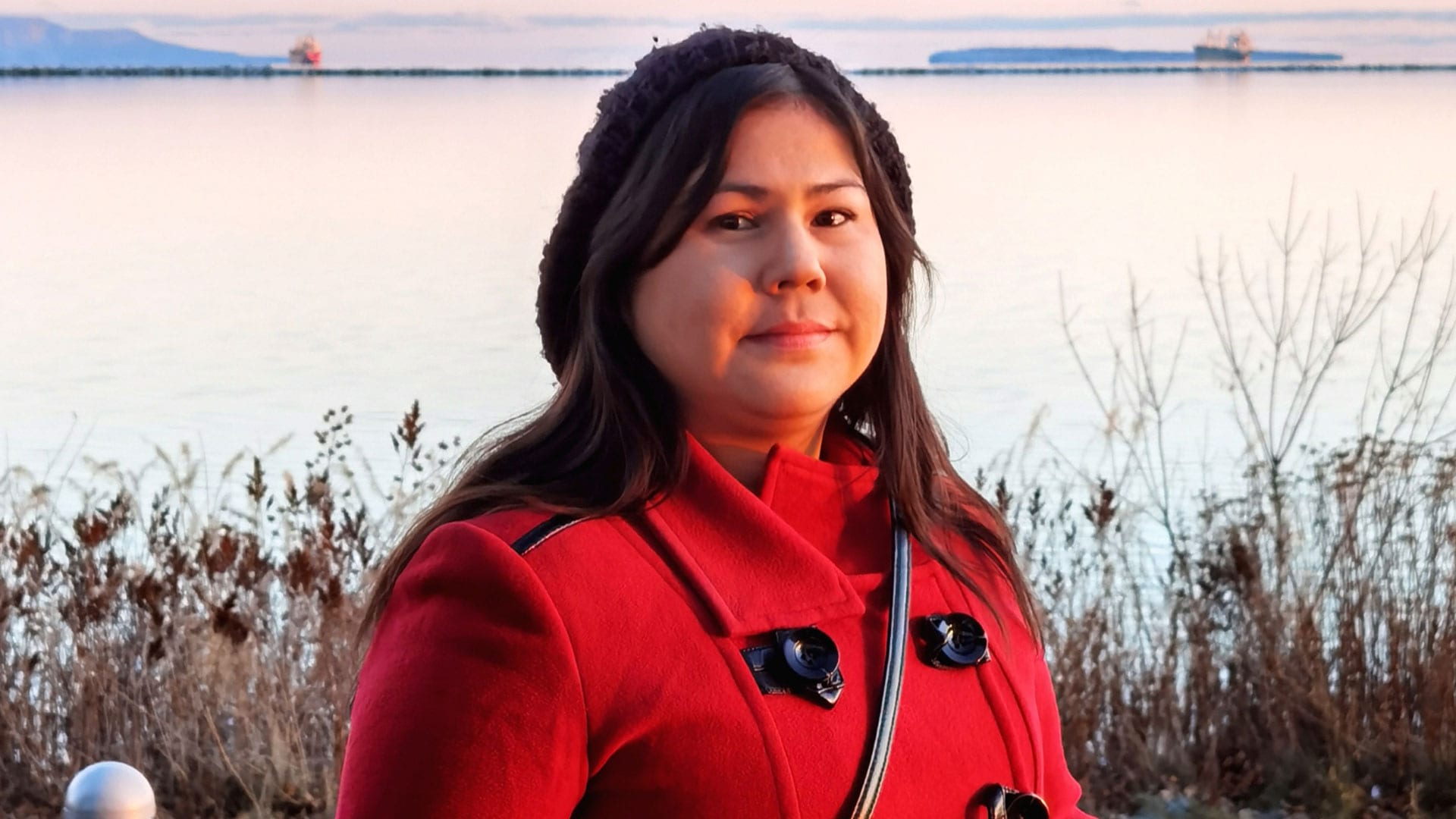
Seven First Nations students have died there under strange circumstances over the last 20 years. An Inquest into the deaths of Jethro Anderson, Reggie Bushie, Robyn Harper, Kyle Morrisseau, Paul Panacheese, Curran Strang, and Jordan Wabasse drew national attention.
The Thunder Bay Police Service (TBPS) came under scrutiny after complaints from local First Nations of racism and discrimination in their dealings with Indigenous Peoples.
This prompted an Inquest by the Office of the Independent Police Review Director.
It released its systemic review report in 2018 on the relationship between the TBPS and Indigenous communities, finding significant deficiencies in sudden death investigations involving Indigenous people that are due, in part, to racial stereotyping.
Thunder Bay again drew national attention on December 14 when Brayden Bushby was found guilty of manslaughter in the death of Barbara Kentner. 34.
Bushby, who is non-Indigenous and 18 years old at the time, threw a metal trailer hitch from a truck in January 2017 in Thunder Bay.
The hitch hit Kentner, an Anishinaabe woman of the Wabigoon Lake Ojibway Nation and punctured her small intestine. She died six months later. Bushby was allegedly heard yelling, “I got one,” after Kentner was hit.
Mandamin said she knows the problems with racism in Thunder Bay are extensive.
She added high expectations are put on her to solve the racism problem, but that won’t happen overnight.
“We’ve been living in colonialism for over 100 years of active, intentional colonial acts. It’s not really fair for people to put it on me to get it done in a week. It’s going to take a long time,” said Mandamin.
The strategy was developed using policy recommendations of commissioned reports relevant to a municipal setting and cited in the Anti-Racism and Inclusion Accord, which includes the United Nations Declaration on the Rights of Indigenous Peoples; Truth and Reconciliation Commission of Canada; Office of the Chief Coroner Inquest on the Seven First Nations Youth; National Inquiry into Murdered and Missing Women and Girls; and Relationships agreements the City of Thunder Bay has with Indigenous partners.
The plan also incorporates the Anishinabek governing principles; the Seven Grandfather Teachings of respect, honesty, humility, love, bravery, truth and wisdom. These teachings are considered sacred to Indigenous Peoples of the region.
“I have adapted the Seven Grandfather teachings into the corporation (as a city). The Elder’s Council guided this process,” said Mandamin.
Six Indigenous elders sit on the council and meet with Mandamin to advise on the implementation of the strategy on a bi-weekly basis.
Elder Marlene Pierre of Fort William First Nation has been a member of the council for several years, she says the city’s plan to tackle racism is groundbreaking.
“It’s been a really interesting ride,” Pierre said during a phone interview in early December. “To be honest there was never a highly developed strategy before, there’s nothing really to compare it to.”
She adds that the document offers hope and guidance to help illuminate a path for the city to achieve reconciliation.
Pierre has advocated for community wellness for the past 40 years.
She is one of the founders of Beendigen Anishinabe Women’s Crisis Home and Family Healing Agency and Shkoday, a grassroots culturally based Indigenous children and youth organization.
She said witnessing the way Indigenous Peoples in Thunder Bay struggle with poverty, addictions and other ailments are treated, bothers her. She hopes for positive solutions to these complex problems.
“When this opportunity came I wanted our people respected- in stores, on the streets, in the courts, everywhere…We’re always treated discriminatory, others here are always judgemental towards our people. Any attempt tried before the strategy came along fell on deaf ears,” she said.
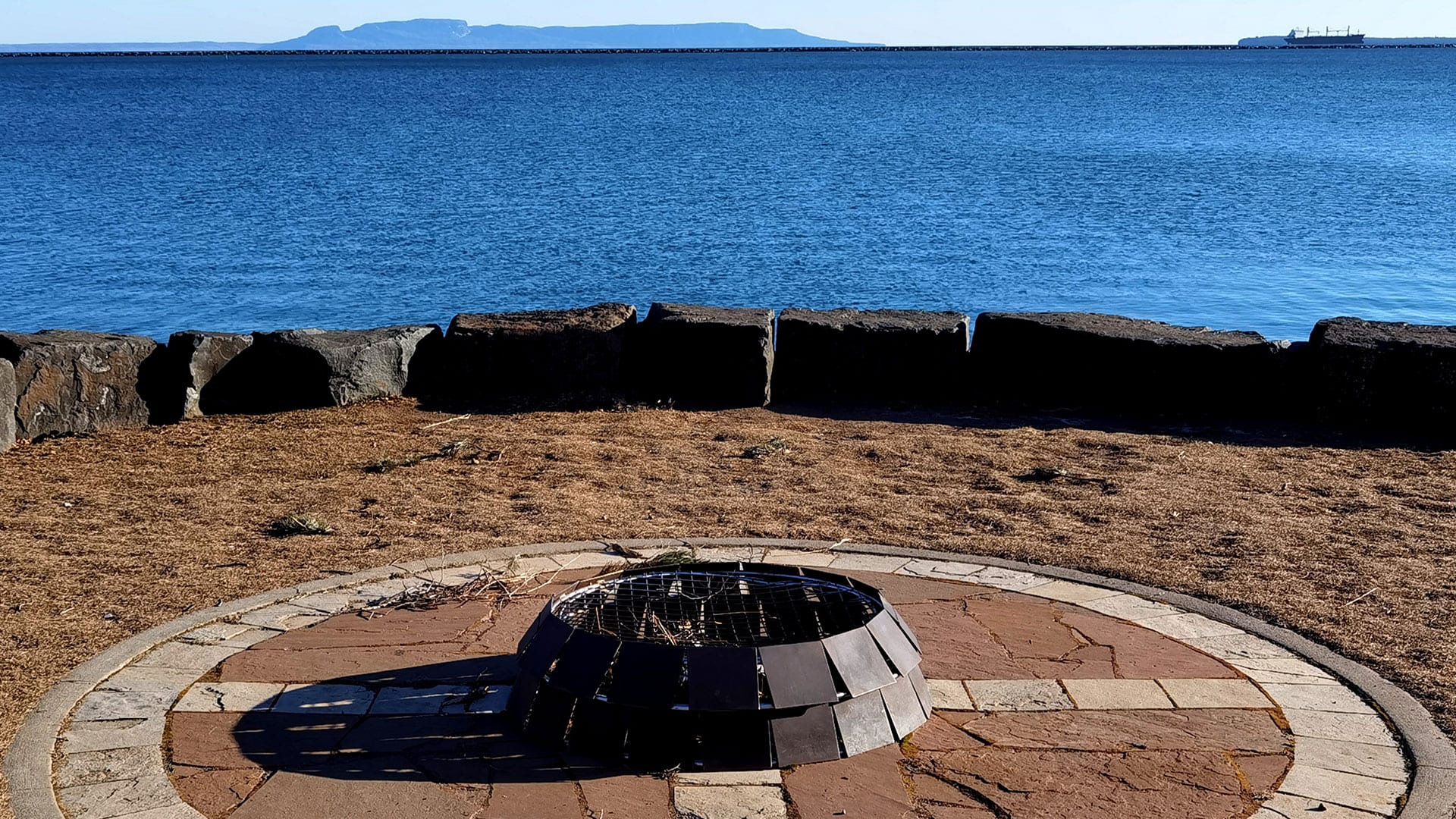
Ma-Nee Chacaby is another member of the city’s Edler’s Council. She is an internationally recognized author for her book, A Two Spirit Journey: The Autobiography of a Lesbian Ojibwa-Cree Elder. A linguist and advocate for LGBTQUII+ and other youth, she is a passionate Anishinaabe leader.
Chacaby previously found the elders council ineffective due to the city’s former administration.
According to Chacaby, previous efforts to facilitate structural reconciliation by former Aboriginal Liaison Ann Magiskan were met with systemic barriers.
“Ann did a good job too, she tried to fight,” said Chacaby. “She was overpowered by too many people.”
Chacaby now has a renewed outlook with this strategy, but she said it has to move beyond the bounds of the city walls in order to gain momentum and make a tangible impact.
“We need to believe in a good future for our kids; this is our time to fight, our young people to get out and fight when there is something to fight for. I would like to say to First Nations People, come on you people, wake up!”
She went on to explain how transformative movements like Black Lives Matter are catalysts for change. She encourages people to take their own action in the city.
“I would like to see the young people of Thunder Bay, low-income families, whoever they are-all people, different cultures- get off their bums and join when there’s something going on for people. Any event, go there, be that voice for the ones that can’t make it!”
However, David Cryderman, a non-Indigenous man from Thunder Bay who works as a mental health worker, an advocate for youth in the justice system and professor at Confederation College in the Aboriginal Community Advocacy program, said he’s not too optimistic about the city’s aspirations.
“One of the major issues I have with the strategy is words like systemic racism are thrown out. They (city) don’t spend any time addressing what it means. They want to skip more into reconciliation without dealing with the deeper issues going on here,” said Cryderman. “It’s like they’re saying we have all these Indigenous people here and it’s a problem that we need to contain…it’s been like that from the beginning.”
He pointed to the long-standing complicated and hostile relationships between settler colonizers and Anishinabe.
“Truth is this (Thunder Bay) is a port and a fort. The reason we are living here is to hold ground in settler colonialism resource extraction. When we (settlers) showed up we put up forts with sharpened logs, with big walls. Guys with fancy hats lived inside and Indigenous People had to stay on the outside. Now (to this day), the interest of this city is the resource extraction economy. The dynamic of settlers holding ground against Indigenous Peoples is still very prevalent.”
Cryderman believes the time is now for real social change and to uplift the voices of the Indigenous community. For settlers to learn from and follow the Indigenous lead to avoid further crisis.
“We are on the verge of an apocalypse for the White people. The Indigenous Peoples have been living under an apocalypse for a few hundred years now,” said Cyderman. “It is a bit self-serving, but how are we going to survive impending doom?
“Why wouldn’t we be trying to learn from people who have been doing it already and are already here…their culture, wisdom and technology are still here.”
Mandamin, however, referenced some of the strategic goals are fostering collaborative and respectful relations with Indigenous community, partners and nations; building a responsive city via supporting city capacity to further inclusion; enriching public dialogue and knowledge on Indigenous topics with Indigenous partners; and promoting the well-being of Indigenous Peoples in Thunder Bay through the creation of welcoming spaces and improving access to services.
“We took comments from the Indigenous community to heart and plan to continue to do so to provide advisory support and inclusion in our corporation, reconciliation and implement the anti-racism strategy,” said Mandamin. “I don’t take this very lightly. This will only get easier if there’s more Anishinabe, Indigenous, and Metis in the room.”
Ultimately, the elders encourage community members to give the plan a shot.
Chacaby says, although it may be difficult, she has faith in Mandamin’s ability to implement the full vision of the strategy.
“I think it’s gonna be a good one. I believe Regina’s gonna do that (bring it about), I hope that comes for her, because that is all of our dreams too,” said Chacaby.
And Pierre offers advice for Indigenous Peoples to not give up hope.
“Don’t hide in the shadows, don’t blend in. I think we need to be proud of who we are, we have so many gifts to give,” said Pierre.
Sarah Nelson and Michel Dumont through Journalist’s for Human Rights Indigenous Reporters Program





